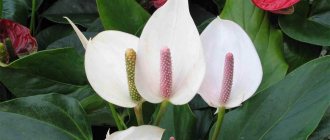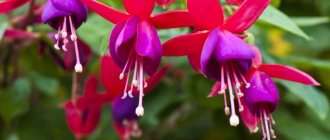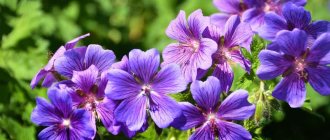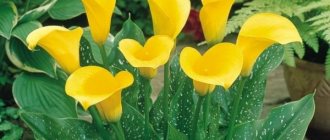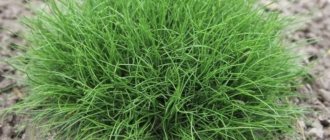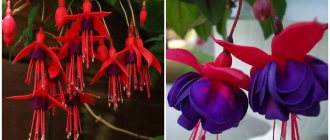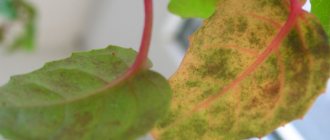Description of fuchsia with photo
First of all, I would like to say that the Fuchsia genus includes approximately one hundred species of plants that belong to the Fireweed family. Its representatives live in the mountain forests of America, and are also found in Mexico, Argentina, Tahiti, New Zealand, Chile, Peru and the Falkland Islands. Under natural conditions, the plant always lives in partial shade, under the canopy of trees.
The leaves of the plant are opposite; their shape can be either lanceolate, ovate, serrate, or crenate or entire. The fruits of the plant are quite juicy, and somewhat resemble berries. The appearance of Fuchsia is either bushy or creeping. It has graceful flowers on thin stalks, which differ in different colors.
The main feature of fuchsia that gives it the greatest grace is the long, brightly colored stamens protruding outward and the prominent pistil style. All this makes the plant a unique creation.
Individual Peasant Farmer Davydov Andrey Nikolaevich
The Davydov farm nursery is engaged in the production and sale of planting material. We produce a wide range of more than 4,000 types of vegetable, flower, ornamental, berry, fruit, coniferous and deciduous crops.
Our specialists are always ready to advise you on crop production issues. The nursery sells plants with a closed root system, which ensures 100% survival rate Address
243015 Bryansk region, Vereshchaki village, Novozybkovsky district, Kommunisticheskaya st., 58, apt. 3
Reviews about the seller ##reviewName##
##reviewDate##
Order No. ##reviewEntityId##
Review Deleted
##reviewMessage##
There are no reviews.
Types and popular varieties
Over a fairly long period, many types of fuchsia have been bred. This article will only talk about a few.
Fuchsia hybrid
An upright or hanging shrub. It has quite bright flowers, which are distinguished by their large size. A distinctive feature of this variety of fuchsia is its differently colored cups and petals. This species has a large number of varieties. Among which are:
- Litte Bell, since the flowers of this variety somewhat resemble bells;
- Cecile - the shape of the flowers is reminiscent of the skirts worn in the fifties;
- Swingtime – the flowers resemble some unknown overseas birds.
Fuchsia hybrid
Fuchsia trifoliata
It is considered a rare type of fuchsia. A distinctive feature is the presence of rhizomes, elegant large foliage with a reddish-green color, short inflorescences, and finally, bright coral flowers. The fuchsia variety is quite hardy. Varieties: Bacon, Constance, Garden News. These varieties are winter-resistant and can be kept either in little or no shelter, or under snow.
Fuchsia trifoliata
How to grow fuchsia from seeds
Preparing soil and seeds
Land preparation. There is an option to purchase special soil in the store, or you can make it at home. To do this, take three parts of turf soil, two parts of peat, one part of sand. Place the soil in a container and moisten it, spray it with a weak solution of potassium permanganate, and try to compact it well.
Seed preparation. You can buy seeds in a special store, or you can get them yourself. Carry out pollination: transfer pollen from the stamen of one flower to the pistil of another. Cover the pollinated bud with a bag and wait until the fruit (small berry) grows. When it appears, remove the cover and wait until the berry turns purple. After this, collect the fruits, carefully collect the seeds from it, dry it, and put it in bags.
Sowing
Seeds should be sown on the surface of the soil that you have previously prepared. Do not cover them with soil, as is often customary. A slight pressing of the seeds into the ground will be enough.
Very important! The pressure should be light, as the seeds need light to sprout. But, if you still decide to sprinkle it with earth, do it very symbolically.
Seedling care
The container with seedlings should be covered with polyethylene or glass. After this, it is important to move the future plant to a warm, bright place, protected from direct sunlight. Maintain the temperature in the area that is best for seed germination. This is approximately eighteen to twenty degrees Celsius. If condensation occurs, ventilate the seedlings.
Pay attention to soil moisture; it should not be waterlogged. If the soil suddenly dries out, spray with water. Sprouts will appear in twenty or thirty days. After this, ventilation should be carried out more often, gradually increasing the time.
After the second pair of full-fledged leaves appears, pick. Try to feed the seedlings with mineral fertilizers once every two weeks. When the height of the sprouts reaches ten centimeters, pinch the top.
Most common varieties
Fuchsia growing and care at home
Many modern varieties are characterized by bright color combinations.
Fuchsia Blue Vale
This is a universal variety; it can be grown either as a bush or as an ampel. The snow-white sepals of double, large flowers have a green tint along the edge. The flower's skirt is fluffy and lavender in color.
Flowering is long lasting and very abundant.
Fuchsia Bella Rosella
The plant has some of the largest flowers (10-12 cm). They are terry, bright, lilac-pink with snow-white stamens and pale pink sepals. Flowering is abundant and long lasting.
Fuchsia variety Bella Rosella has an ampelous and bush form. It is unpretentious and can grow in shade.
Variety Bella Rosella
Fuchsia Blue Angel
Blue Angel variety is an exquisite, memorable fuchsia. The flower size is up to 12 cm in diameter. The corolla (skirt) of the flower is double dark lilac in color, the sepals are white. When fully bloomed, white stamens with pink anthers become a spectacular accent. The bush is semi-ampelous (drooping).
Fuchsia Hollis Beauty
The flowers are large (7-8 cm), double, white sepals, lilac-blue skirt. The bush grows very neatly, has a compact shape, and branches well. The variety tolerates heat and bright sun better than other fuchsias.
The flower is elegant, contrasting, white-green sepals set off the purple-pink skirt. Especially good in full dissolution. Pink elongated stamens set off milky white anthers.
Important ! The growing form is ampelous; the lashes of an adult plant grow up to 60 cm in length.
Fuchsia Blue Ice
The plant was obtained as a result of the starting mutation of the Dark Eyes variety in 1954 in the United States of America. Large, double flowers are distinguished by a characteristic arrangement of petals. They resemble a multi-layered petticoat. The color of the petals is deep lavender, the sepals are light crimson. It is interesting that in plants of this variety, flower petals can vary in color intensity. The variety is undemanding; it is grown in bush and hanging forms. Grows quickly, restrictive pruning is recommended to form a dense crown. Feels good in partial shade.
Fuchsia Bicentennial
Fuchsia ampelous Bicentennial is painted in salmon-orange tones. The characteristic magenta strokes along the edge of the multi-layered skirt create an extraordinary color contrast. The flowers are elongated, rather large, in the form of buds. Light sepals become bright orange over time.
The variety was bred by Californian gardener Ted Pasquesen in 1976 and dedicated to the 200th anniversary of US independence. Paskesen carried out lengthy breeding work to obtain a variety that was resistant to heat and strong winds.
The plant forms a dense, branching crown and blooms profusely.
Variety Blue Mirage
Fuchsia Blue Mirage
The plant can be grown as a semi-mounted plant, in the form of a drooping bush and in hanging containers.
Blue Mirage is a large-flowered variety that blooms with deep purple flowers with snow-white sepals. The length of the shoots of the variety is up to 40 cm. Flowering is early, abundant, and long-lasting. The flowers are double and large.
The leaves are medium in size, the stems become woody quickly, so the variety is easy to grow in standard form. The variety is fast growing and winters well. Suitable for growing by beginning gardeners.
Fuchsia Cecile
The flowers are large, double, and have a bright, unusual combination of shades. The wavy, layered petals are lavender blue and the sepals are dark pink. Fuchsia variety Cecile is grown in bush and hanging form.
Vessel
The unique purple-pink color has become the hallmark of the flower; it is not without reason that one of the first synthetic dyes, fuchsin, received its name.
The ships of the Japanese company ONE (Ocean Network Express), which is engaged in sea container transportation, cannot be confused with others. Their signature color is fuchsia.
Photo 7 Motor ship "Fuchsia"
The no less “glamorous” pleasure catamaran “Fuchsia” plies along the Moscow River.
Caring for fuchsia is easy. If you create optimal conditions for the plant, elegant lantern flowers will create a bright mood for many years.
How to care for fuchsia outdoors
Watering
Fuchsia is one of the plants that love moisture. It can either be watered or sprayed. But the main thing here is not to overdo it and show moderation. Fuchsia should be watered every day, but this should be done with a small amount of water. Otherwise, your plant will be at risk of root rot. Before watering, assess the top layer of soil. If the fuchsia is dry at a depth of one centimeter, then watering is very necessary.
It is very important to install a drainage layer at the bottom of the container. This is necessary so that the roots do not suffer from excessive moisture. The essence of the drainage layer is that it absorbs excess moisture, which can harm the plant.
Feeding
Fuchsia will develop correctly only if the soil mixture contains a sufficient amount of humus and useful fertilizers. Therefore, it is very important to make sure that you have applied a sufficient amount of phosphorus fertilizers to the ground before planting the plant in open soil. But it doesn't end there.
During the important period of the plant, namely flowering, it is extremely necessary to feed the fuchsia about two times so that the plant does not wither.
Trimming
Pruning is carried out at the end of winter - beginning of spring. It is very important to remove the bottom 2/3 of the plant. This includes dead and diseased parts of the fuchsia. Pruning will significantly rejuvenate the plant and promote abundant flowering in summer and autumn. Trimming rules:
- Twelve hours before pruning, water the plant.
- Remove all bad branches. That is, damaged or dead, thin or intersecting.
- Cut back damaged or weak branches almost all the way to the stem.
- Trim vertical branches.
- Prune healthy branches. The result should be a branch with three buds.
- Remove all old leaves.
How to prune fuchsias after winter: video
Garter
To make the fuchsia bush beautiful, its central part can be tied to small pegs and left to grow further, periodically cutting off the side shoots.
Fuchsia is the flower of creativity
To inject energy and eliminate “creative crises,” artists, architects, poets and other people with a creative direction are given fuchsia for the holidays.
The plant gives peace of mind, fills thoughts with creative ideas and gives the opportunity to carry out non-standard projects. A fuchsia flower located in the house prevents residents from diseases of the gastrointestinal tract and stabilizes the functioning of hormones and glands.
The plant will not harm people who treat the flower with care and do not forget to care for it. In a house where there are children, fuchsia will help quickly find a common language between parents and children and help find mutual understanding between them.
It is also believed that by loving and caring for your beauty, you will receive love in return, multiplied several times, which can fill you with charm and charm. If you suddenly dreamed of fuchsia, expect changes for the better in your personal life. Soon you will have a loved one who will bring a lot of pleasant emotions. If there are other people besides you in the dream, then expect a grand celebration. For example, a wedding.
And if you dream of fuchsia and animals are present, expect to meet old friends. Fuchsia is a diverse ancient plant that has several types of existence - tree, shrub, flower. This flower can serve as an excellent gift for the holidays, decorate your home or garden, and create coziness. The main thing is that for every person there is a type of flower that will give spiritual harmony.
Methods for propagating fuchsia
To propagate fuchsia, two main methods are used: seeds and cuttings. First, let's look at the first method.
Seeds
You can buy them at the store, or try to assemble them yourself. Reproduction using seeds is considered a rather complex method. When you notice that the bud has blossomed, then the stamens of the flower should be removed. But, it is best to do this when the bud has not yet blossomed in order to avoid self-pollination and pollination by insects. After the fuchsia bud opens, apply pollen from the native plant to the stigma of the pistil. This way you will preserve the varietal properties of the plant.
Place paper or gauze on an already fertilized flower. Secure it with threads and wait for the fruit to ripen. Then collect them, dry them, and remove all the seeds. And dry again, but only the seeds. After that, put them in bags and put them in the refrigerator, waiting with them for spring.
Sow seeds in March or April. Pour a small layer of not too fertile soil into a shallow container. Sow the seeds on the surface, adding a little sand and covering with a thin layer of soil. After this, you need to create greenhouse conditions for the seeds; to do this, cover the container with either glass or polyethylene. Place the future plant in a sunny room. Try to keep it at the proper growing temperature: 15-18 degrees Celsius.
Propagation by cuttings
Propagated in this way either in spring or autumn. Take young fuchsia shoots, about fifteen centimeters high. Place them in a glass of water, removing any leaves that may touch the water. If there are large leaves on top of the shoot, they should also be removed so that the plant does not waste its energy. Cover the glass with plastic.
It is worth paying attention to the fact that the water must be filtered. You can also add one tablet of activated carbon to it.
Thus, the risk of rotting will be much less. Within two weeks, full-fledged roots will appear. Then it is worth planting in pre-prepared soil. But, there is another method of cuttings. Its essence lies in the fact that young shoots immediately take root in the soil. To do this, it must be loose, and it should be distributed into disposable cups. Also, you need to make indentations with a stick into which the sprouts will later be placed.
It is very important that the lower leaves do not touch the soil. Moisten the soil and cover with polyethylene. Once the roots appear, begin to harden off the plant. When they fill the entire glass, you need to pick.
Propagation of fuchsia by cuttings and caring for them: video
Planting and propagation
Fuchsia is almost never propagated by seeds in everyday life. It is long, inconvenient, varietal qualities are lost, and the result turns into a lottery. It is most convenient to use cuttings. Select a couple of healthy woody shoots and leave them in water or wet sand. In just 1.5 weeks you will see the first small roots.
For some varieties, cuttings are a mandatory procedure. This mainly applies to hanging and bush species, because with age they grow larger and lose their decorative properties. Cuttings every 3 years are needed to renew the plant.
By the way, you can root the tips of the shoots that remain after pinching. If you are worried, you can cover the container with seedlings with film for the first time. But don’t forget to ventilate and spray it periodically.
Diseases and pests of fuchsia
Rust
- Root rot. When you notice that your fuchsia roots are becoming soft and brown, you can safely say that the plant is affected by root rot. It is very important to promptly determine the presence of the disease, so you will avoid the death of the flower. The main reason: waterlogging. Even good drainage will not help; stronger measures must be taken. Remove the plant from the pot, wash the roots under lukewarm water, cut off the affected parts, and place in a container with good, clean water. When new white roots appear, feel free to plant the fuchsia in a pot.
- Gray rot. Signs of the disease: the affected part becomes watery and soft. Reason: too humid air. When fuchsia is affected by gray rot, a coating will appear on its leaves. In this case, the affected parts should be removed, this should be done with extreme caution. Move the plant to a more suitable place with dry air. In this case, the plant should be ventilated periodically. If necessary, you can use purchased products to treat gray rot.
- Rust. Signs: A powdery rusty coating forms on the underside of the leaves. This indicates that the plant is sick with rust. If timely measures are not taken, then such a misfortune threatens all fuchsia flowers. Such spores are carried by the wind and can infect other plants that are nearby. Destroy the affected parts of the fuchsia, and try to spray fungicides twice in eight days.
- Whitefly. When the summer is hot, all the windows in the room are open, so the whitefly can easily fly into the room and lay its eggs on the leaves. You definitely won’t notice its arrival, since the butterfly is very small. As a result, small white droplets form on the plant, and they cannot be washed off with water. Otherwise, it will get even worse. Butterflies will begin to hatch from the eggs, the number of which will be quite large. They feed on fuchsia juice. As a result, the leaves turn yellow and fall off. This period will be fleeting, and soon the butterflies will begin to eat the plant stem. Action needs to be taken urgently. Wash the leaves with warm soapy water. It is very important to pay special attention to the inside of the leaf and the stem. Be sure to protect the fuchsia roots, as the soap solution will destroy them. If the stage of pest infestation is not so late, then several washes will be enough. If this does not help, purchase special products.
- Mite. It won’t take much time for such a pest to destroy a plant. Try to check fuchsia daily for the presence of this pest, especially if the room is dry and hot. Signs: matte leaves, yellowish, as well as small gray and black spots. You can also notice a cobweb on the plant. If the mite infestation is severe, the leaves will begin to fly off. Try to carry out repeated treatments; once will definitely not be enough. You can use “Fitoverm”, “Akarin”, “Agravertin”. Treatment (repeated) should be carried out three times, with a break of a week.
If you adhere to the basic rules of growing, then pests and diseases will not be able to destroy your plant. The main thing is to take preventive measures in time.
Video
Conditions
delivery April 21*, Friday
- Next pickup is April 21* , Friday
- 400 rub. for orders from 600 to 3000 rub.
- For orders worth more than RUB 3,000. delivery as a gift .
- Orders worth less than RUB 600. (excluding delivery costs) we do not deliver by courier.
* For orders placed before 15:00 Wednesday
Attention! From 12/14/17 to 01/7/18 we operate only in order acceptance mode.
Delivery across Russia
Geography of orders, delivery times by Russian Post, price. More details about delivery by Russian Post >>
Delivery by courier in Moscow
Payment Methods
- Cash to the courier or the administrator of the pickup point
- Transfer to Sberbank card
- Cashless transfer
Pickup in Moscow
Attention! You can arrive to pick up your order after prior confirmation of the date and time of pickup.
Pick-up point Profsoyuznaya metro station
Address: m. Profsoyuznaya , st. Vavilova, 66, Triumfalny shopping center.
- Cost 50 rub.
- Opening hours: from 12:00 to 20:00 Mon.-Fri., from 12:00 to 19:00 Sat.-Sun.
Meeting at the subway
- Wednesdays and Sundays at 13:00
- For free.
Delivery by Post in Russia
- Cost: Parcel – 350 rub. , Package 1 cell. – 500 rub. (together with packaging).
- The period for sending by mail is from April to October.
Attention! We send plants by mail within 7 days after confirmation of payment for the order.
Delivery in the Moscow region
We deliver orders in the Moscow region by agreement. Contact us to find out about the possibility of delivery to your address in the Moscow region.
What to do in the fall
In the fall, you need to prepare the plant for winter dormancy. To do this, from September you need to gradually reduce watering. By the time frost sets in, fuchsia should be dry. Stop giving fertilizer so that the plant begins to shed all its greenery and flowers. Move the fuchsia to a place where the light is much weaker.
If suddenly the room is too dark, then simply turn on the incandescent lamp for several hours every day. It won't be hard work.
To ensure that the plant is fully prepared for hibernation, move it to the balcony or basement. There, fuchsia should be kept at a temperature of no more than fourteen degrees Celsius.
Warranties and returns
Guarantees
We work under an offer agreement, which is a legal guarantee that we will fulfill our obligations.
Purchase returns
If the product does not suit you or does not match the description, you can return it by paying the return shipping cost.
- You retain all payment receipts, which confirm the conclusion of the transaction.
- We buy goods only from trusted sites and from trusted sellers who are fully responsible for the delivery of the goods.
- We provide real tracking numbers for shipping goods within Russia and provide all necessary documents upon request.
- 5 years of successful work and thousands of satisfied clients.
How to care for winter at home
After all the flowers and leaves have fallen from the fuchsia, it needs to be provided with optimal conditions for hibernation. Dig the plant bush out of the soil, doing this with extreme caution. Try to thoroughly shake off the remaining soil from the roots. Carefully inspect the fuchsia roots for rot and pests. If there are any, cut them off with a sterile knife.
Prepare the pot for hibernation. Wash it thoroughly and disinfect it. Fill the bottom of the container with a drainage layer, cover it with fresh soil, carefully place the fuchsia bush in it, and fill the voids with soil.
After completing all these steps, place the plant in a dark, damp place. The temperature should be no more than fourteen degrees Celsius. Try to follow all winter care rules, which include:
- Regular ventilation of the room. This should be done daily.
- Insulate the bottom of the container with polystyrene foam to prevent root rot.
- Make sure that the growing area always has moist air.
- Water no more than four times every thirty days.
- Before putting the plant into hibernation, treat the bush with a pest repellent.
- If suddenly there is no access to sunlight in the room, provide the plant with lighting using ordinary incandescent lamps.
Growing conditions
Among indoor and garden flowers, fuchsia is far from the most demanding plant. It can be grown in a pot, the volume and size of which will allow it to be used both in the garden and in the room.
Lighting
Fuchsia loves the sun, but grows in slightly shaded conditions. If you leave a flower on a south-facing balcony, the flowers and leaves may get burned. The same thing can happen on a south window in an apartment.
In autumn and winter, when there is little sunlight, this plant also needs lighting. Every day the flower should receive light for 12 hours.
The soil
Any soil with good drainage will be suitable for perennials. Perlite, vermiculite or expanded clay are used as drainage. You can make a fertile soil composition yourself by using humus, peat and sand in proportions of 3: 2: 1.
For good growth and development of fuchsia, you need loose and nutritious soil mixtures that are able to absorb water and perform air exchange. The soil reaction should be slightly acidic or neutral. If a plant is planted in soil that is poor in nutrient components, and even with a pronounced alkaline reaction, the perennial will very quickly begin to rot, the color of its foliage will lose brightness, flowering will be sparse, or the plant will completely shed its buds.
If it is not possible to prepare the soil substrate yourself, you can purchase it ready-made by visiting a specialized store.
Fertilizers
To make fuchsia grow intensively and bloom profusely, the plant needs to be fed. But you can apply fertilizer only 1 month after you have completed the annual spring flower transplant. The frequency of feeding is once a week. Use ready-made mineral compositions for flowering plants. During the period when you are growing a seedling or forming a standard tree, fuchsia must be supplied with nitrogen compounds.
Some drugs, for example, "Epin", are not applied to the ground; they need to be sprayed on the plant to enhance its growth and acclimatization. Fuchsia is fertilized with bone meal powder, which is distributed over the surface of the soil, and then watered. It is enough to add 1 tbsp. l. funds for a pot with a medium-sized plant.
Excessive feeding is harmful to the plant. An excess of minerals will force the perennial to grow foliage, but it will bloom poorly - the flower stalks will be weak and few of them will be formed. Fertilize should be done in spring and summer, and in autumn and winter you need to give the flower a rest.
